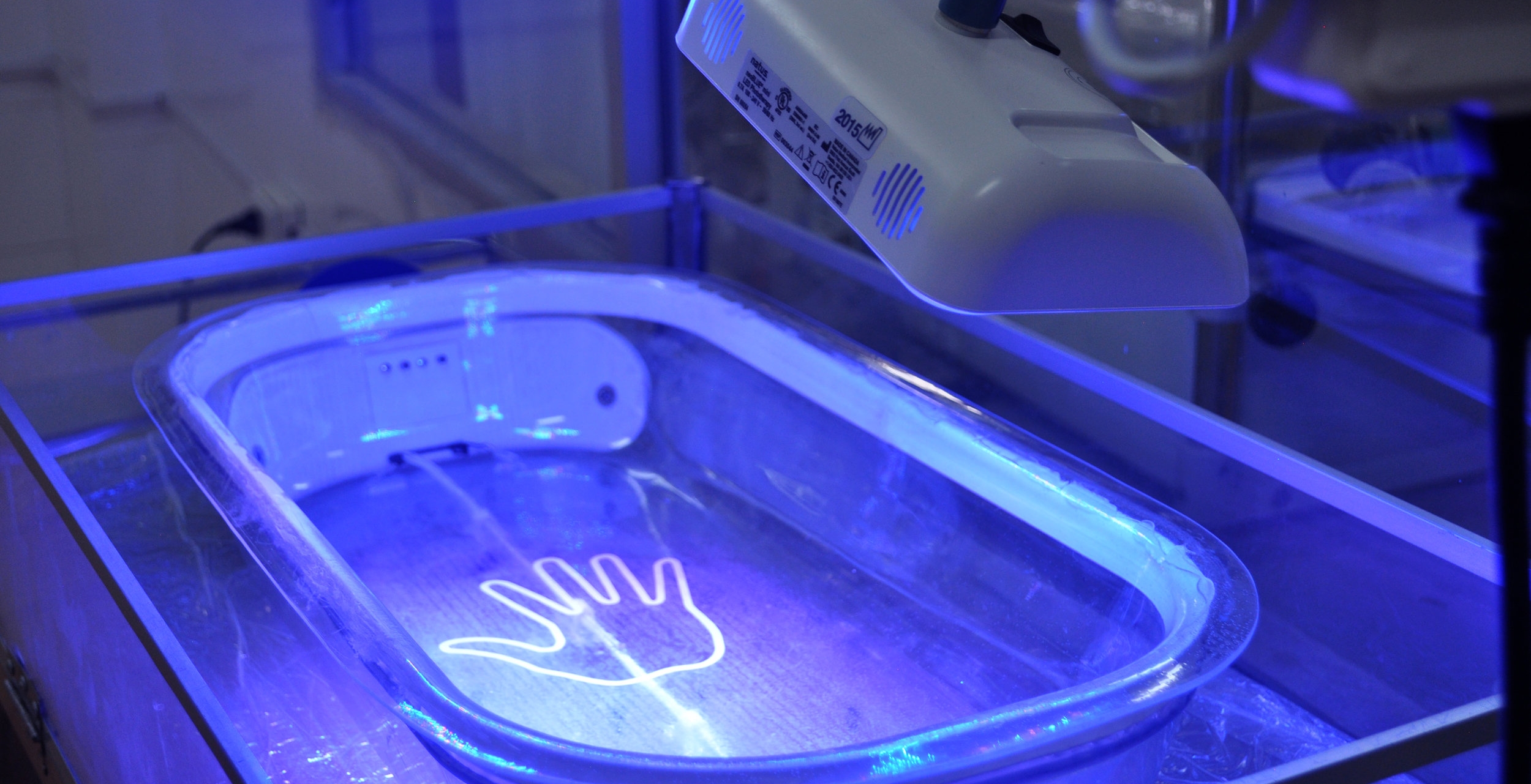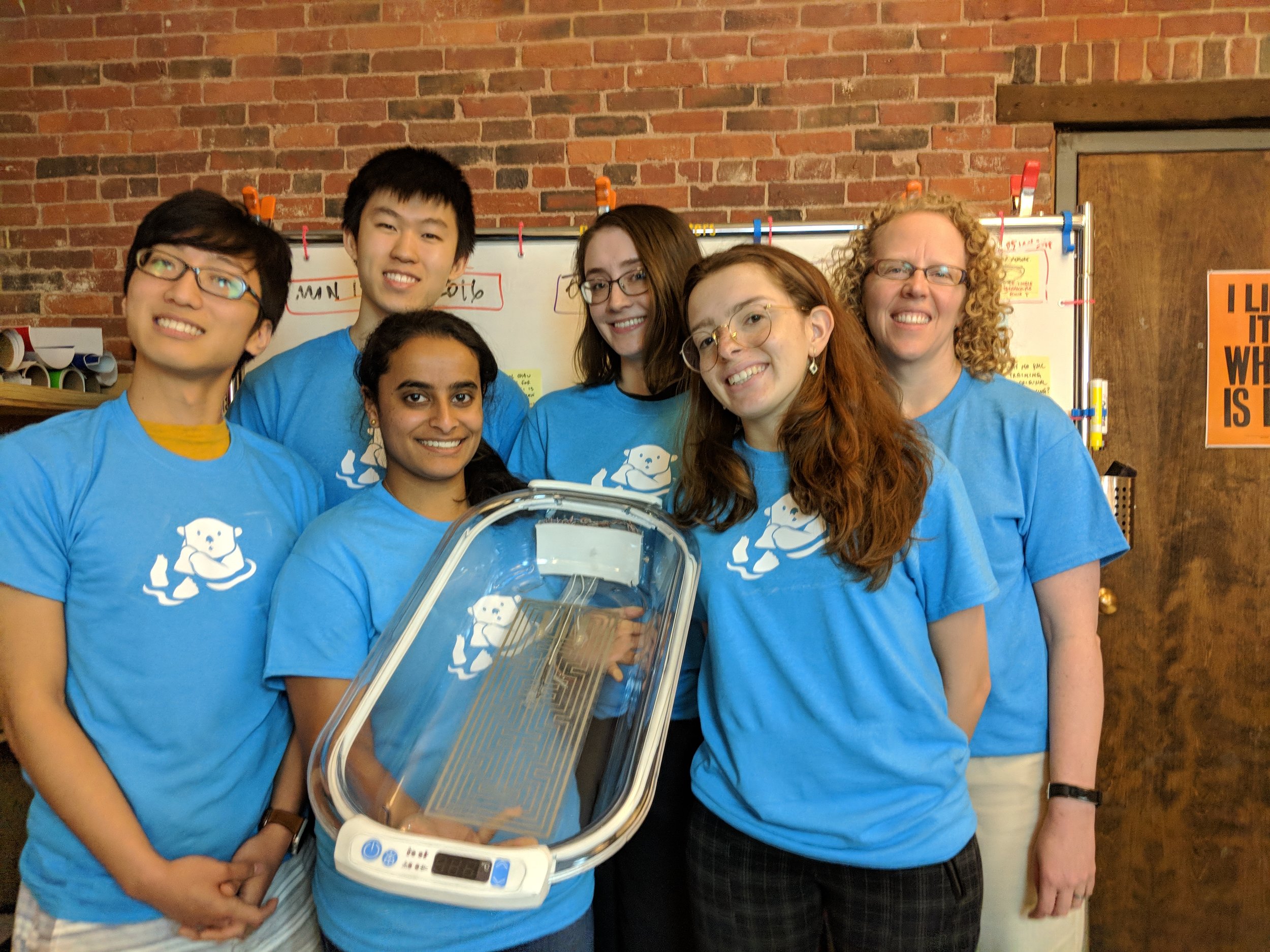Otter Newborn Warmer
In Progress
Otter is a newborn conductive warmer designed specifically to allow rural hospitals with limited resources and inexperienced staff to successfully treat premature and low birthweight newborns who are especially vulnerable to hypothermia.
Unlike the incubators and radiant warmers a rural hospital might receive as donations or through a government purchase, the Otter Warmer provides effective newborn warming that is “easy to use right and hard to use wrong”--in other words the device eliminates the most common sources of product failure.
The Need
Each year over 4M infants in developing countries die within a month of birth due to complications of prematurity, low birth weight (LBW) and infection (Lawn 2005). We could prevent more than 1.3M of these deaths by providing at-risk newborns with a warm and clean environment in which to grow stronger.
Hypothermia is common even in tropical environments, and is increasingly recognized as a major cause of neonatal morbidity and mortality (Kumar 2009). Although hypothermia is rarely a direct cause of death, it is a significant contributing factor to newborn mortality due to neonatal infections, preterm birth, and asphyxia (Lunze 2011).
Low-birthweight newborn in a Rohingya refugee camp in Thailand. As the facility had no newborn warming devices, the staff resorted to bubblewrap for insulation. (photo from CIMIT/IOM)
The Alternatives
Kangaroo Mother Care (KMC), newborn warming through skin-to-skin contact, is ideal for preventing hypothermia (Sachdev HPS, 2016), but not always possible. Vulnerable newborns need another form of active warming if their mother is infectious, if they need other treatments like phototherapy, or even during brief stays away from their mother in the emergency room or in a newborn intensive care unit (NICU).
One alternative to KMC is an incubator, a convective warming device that provides warm and humid air that is regulated by measuring the newborn’s skin temperature with a disposable stick-on probe. Another alternative is a radiant warmer, which provides heating through infrared radiation that is also regulated by skin temperature probe measurements. Unfortunately, neither of these devices is well suited to the context of a low-resource hospital: both are complex, expensive to maintain and difficult to keep clean.
Newborns are particularly vulnerable to hospital-acquired infections. One Boston NICU technician estimated that it takes 45 minutes to properly sterilize an incubator between patients. Few rural hospitals in developing countries have the resources to follow this protocol. In addition, few can afford to maintain a sufficient number of incubators, so it is not uncommon to find two or more newborns sharing a single device.
In order to provide warming during phototherapy, three newborns in a Vietnamese hospital share a single incubator, increasing the risk of hospital-acquired infection
Operating either warming device without a skin temperature probe creates the risk of overheating and harming the newborn (Amadi 2014). Disposable probes are expensive and supplies are typically hard to find in low-resource settings, so many hospitals are forced to either abandon the warmers or to use them without patient temperature feedback.
Finally, devices like incubators and radiant warmers are designed with American or European hospitals in mind. In a low-resource setting, spare parts are hard to source, power spikes and outages are common, and humidity, dust and bugs are tough on any electronic equipment. According to one study (Malkin 2007), up to 98% of medical equipment donated to the developing world from wealthier countries is broken within five years.
There exist conductive warmers on the market, for example Embrace and Kanmed, but neither device is compatible with double-sided phototherapy and both are prohibitively expensive for low-resource settings. Both devices use fabric covers that would be difficult to keep clean, or disposable liners that would be difficult to source
The Otter Newborn Warmer
Otter is a durable, washable warming bassinet designed specifically to allow rural hospitals with limited resources and inexperienced staff to successfully treat premature and low birthweight newborns who are especially vulnerable to hypothermia.
Otter will work as a stand-alone device and as a complement to both DtM’s Firefly and to conventional overhead phototherapy devices. To facilitate adoption, the device will comply with existing international standards for conductive newborn warming devices.
Otter will build directly on DtM’s experience and partnerships developed during the Firefly newborn phototherapy project. Firefly is now a CE Mark certified medical device that DtM partners have distributed to 23 countries from Afghanistan to Zimbabwe. These Firefly devices have already treated more than 100,000 newborns and are projected to treat more than 300,000 newborns over their lifetime.
Early Otter Design Concept
2016 Otter Design Concept
Current Otter Alpha Prototype
Otter Concept with Preemie Positioning Aid
Positioning Aid Concept
Current Otter Alpha Prototype
Progress to Date
As of January 2019, Design that Matters has completed four rounds of Otter prototyping, and user interviews and design reviews with neonatology and global health experts in Boston, Haiti, Vietnam and Sierre Leone. Through this rigorous human-centered design approach, we have established the following Otter design principles and key features.
Otter is designed to be:
Hard to use wrong: simple “plug and play” user interface automatically sets a safe and effective surface temperature. The bassinet only fits a single term newborn, in order to reduce the incidence of cross-infection from newborns sharing beds.
Easy to clean: a modern incubator can take up to 45 minutes to clean properly given all of the internal seams and crevices; Otter has a smooth, seamless interior that can be wiped clean with alcohol in just minutes.
A complement to KMC: Otter maintains the temperature of newborns who cannot be thermoregulated using kangaroo mother care (KMC) because they are in the neonatal intensive care unit (NICU) for observation or treatment, for example receiving phototherapy from Firefly
Compatible with Phototherapy: All newborns receiving phototherapy are vulnerable to hypothermia, so Otter is designed to work with both the Firefly Phototherapy device and with conventional overhead phototherapy devices like the GE Lullaby and D-Rev’s Brilliance.
Robust: the Otter power supply will be specified for 100-240V and 43-67Hz to better manage the variations in low-quality mains electricity in low-resource settings. The housing will be sealed from dust, and Otter will contain no moving parts. The bassinet will be made from high-strength polycarbonate, which has proven durable in Firefly.
Key Design Features:
Otter maintains a safe and clinically effective conductive warming surface temperature of 36°C, which mimics a mother’s skin temperature during Kangaroo Mother Care (KMC). We are currently exploring the possibility of a user-adjustable surface temperature within +/- 2 degC of 36 degC.
Otter does not require a newborn skin temperature probe for safe and effective operation. This eliminates a major operating cost and a significant source of user-error.
We are exploring the addition of a positioning aid for premature newborns treated in Otter, given the evidence for improved health outcomes (Madlinger-Lewis, 2014)
Nurse at St. Paul Hospital in Vietnam testing the Otter alpha prototype
Project Plan
Building on DtM’s experience with the Firefly phototherapy device, DtM expects to complete Otter development in early 2020. Working with global health partners in late 2020, DtM plans to distribute 1,000 warmer units and to treat over 500,000 newborns in Asia and sub-Saharan Africa.
We expect the impact of Otter to continue beyond the first 1,000 units. DtM’s key argument is that so-called “international” medical device standards, established by governments in North America and Europe, are a poor match for most low-resource hospitals. If we want the international aid community to stop shipping incubators and radiant warmers to developing countries, we have to provide an example of more effective standards.
The health impact data produced by this scale of implementation will allow DtM to establish Otter as the “reference design” for newborn warming in low-resource settings. We see growing evidence of support for DtM’s position that international medical device standards are insufficient and often inappropriate for low-resource settings, specifically in the increasing number of government tenders for double-sided phototherapy devices in countries with significant Firefly installations.
This is the end game for a product like Otter: changing international standards and thus providing an overwhelming incentive for multinational medical device manufacturers to follow our lead and imitate our products. In this way, we have the leverage to improve the health outcomes for millions of the most vulnerable newborns.
Contact us for ways you can get involved!
Videos
Summer 2016: Prototyping Sprint
With a team of Autodesk Student Experts, we designed and fabricated a working prototype for field testing
Dec 2016: Field Testing in Vietnam
Clips from our latest research trip with the working Otter prototype. We traveled to local hospitals in northern Vietnam.
Otter News from the Blog
Collaborators
We extend a big thank you to our donors, partners, and collaborators
Internal Summer Design Team 2017
Kelly Brennan
Malory Johnson
Celine Ta
Olin-Babson Affordable Design and Entrepreneurship Team
Elizabeth Johansen
Prof. Benjamin Linder
Rebecca Obounou
Anna Konstantinova
Kelly Brennan
Katie Barno
Ana Geis Chang
Nicole Ciavola
Paige Cote
Pinar Demetci
Helena Donoso
Kevin Guo
Zach Hayes Handy
Tom Heale
Jenny Ho
Christina Holman
Chia-Yu Hsieh
Maire Patricia Keene
Florian Kleinhoven
Justin Kunimune
Kai Levy
Liani Lye
Joel Mampilly
Haley McLaughlin
Charlie Owen
Rachel Pardue
Sungwoo Park
David Papp
Shreya Rangarajan
Melissa Ruiz-Vera
Waree Rungsiriwat
March Saper
Shreya Shah
Michael Sheets
Celine Ta
Kit Tan
Philip Wang
Sara Wu
Philipa Yu
Michelle Zhang
Internal Summer Design Team 2016
Kristine Chen
Malory Johnson
Kristen Moulton
Karan Mudgal
MIT-RISD Product Design and Development Team
Candice Chow-Gamboa
Daniela Spinardi Silveira
Diego Pinhao
Hala Khoursheed
Megan Correa
Peter Chamberlain
Rachael Aptowitz
Saksham Saxena
Shirlene Liew
MIT 2.009 Team Sunflower
Abdullah Akbar
Andrew Acker
Valerie Andersen
Eduardo Bacardi
Saeed Fakeiha
Jacob Haip
Catherine Fox
David Gilchrist Gholson Glass
Jade Hardacker
Yasmin Inman
Matt Kim
Teresa Lin
Cliodhna McCarthy
Rachel McDermott
Sarah McMillian Lorcan Murphy
Ben Niewood
Jake Slonaker
Joanna So
Isaac Sosa
K.K. Wopat
Brandon Wright
Kristin Zimmerman
International Collaborators
Vietnam
Moc Chau District Hospital
Dr. Khuat Thanh Binh
Head Nurse Dang Van Tai
Hai Duong
Dr. Pmam An Quang
Dr. Dang Thi Thanh Mai
Dr. Pram Van Nguia
Ha Nam
Dr. Khoa Nhi
C Hospital
Dr. Le NguyenTrang
Special thanks to the Dong Anh Family for graciously hosting us at their home to follow up with Baby Khang who was successfully treated in Firefly during clinical trials in 2015.
St Paul General Hospital
Dr. Bui Thi Thuy Duong
Nurse Practitioner Nguyen Hai Anh
Hung Yen
Dr. Nguyen Thi Giang
Dr. Pham Tien Duy
Nam Dinh
Dr. Deng Trang Yoah
Nurse Vu Thi Hai Yen
Nurse Pmam Thi Thu
Bac Giang
Dr. Nguyen Van Thien
Advisors
Olin-Babson Affordable Design and Entrepreneurship Team
Prof. Benjamin Linder
Elizabeth Johansen
Fran Slutsky
Anna Konstantinova
Professor Oscar Mur-Miranda
Chloe Nguyen
Dr. David Hamer
Dr. Anne Hansen
Dr. Jenny Keene
Kelly Keene
Dr. Kamolchanoke Laochaisri
Dr. Kolawach Laochaisri
Dr. Karsten Lunze
Dr. Nguyen Thi Minh Thuy
MTTS
Gregory Dajer
Huan Sy Tran
Steffen Reschwamm
Chloe Nguyen
Hoa Dang Thanh
Trong Vo
MIT 2.009 Team Sunflower
Dr. Steven Ringer
Prof. David Wallace
Prof. Sang-Gook Kim
Prof. Warren Seering
Prof. Elisabeth Schmidt
Prof. Danny Braunstein
Julien Aknin, Cooper Perkins
Michael Zervas, Lincoln Laboratory
Tom Burrow
Jane Kokernak
Robin Miller
David Perry
Bill Cormier
James Dudley
Steve Haberek
Tasker Smith
MIT-RISD Product Design and Development Team
Prof. Steve Eppinger
Prof. Matt Kressy
Prof. Maria Yang
Phillip Gara
Jennifer Jin
Autodesk BUILD Space
Joshua Aigen
Adam Allard
Joe Aronis
Tim Brinkerhoff
Bevin Lin
AthenaMoore
Rick Rundell
Taylor Tobin
Brigham and Women’s Hospital, Boston
Kelly Bucher, RN
Dr. Silvia Testa
Dr. Steven Ringer
Dr. Terri Gorman
Dr. Elisa Abdulhayoglu
David Beadles
Day One Health
Luciano Moccia
Nguyen Thi Xuan Hoi
St Boniface Hospital, Haiti
Dr. Inobert Pierre
Dr. Miliane Clermont
Conor Shapiro
Robbie Patterson
Sayari Patel
Mirebalais University Hospital (HUM), Haiti
Dr. Jack Long
Dr. Delight Wing
Marc Julmisse, RN
Boucan-Carre Hospital, Haiti
Dr. Jean Louis Judson
L'Hopital Sainte-Therese de Hinche
Dr. Anna Stanzelova
Monica Terez, RN
Lelia Dorcin, RN
Donors
Global Design Leaders
Eyk and Rose Marie van Otterloo
Design Visionaries
Anonymous Donor
Autodesk Foundation
Leadership Circle
Suzanne and Michael Graves
Salama bint Hamdan al Nahyan Foundation
The Jeannie Tseng and Colin Rust Charitable Fund
Design Society
Jonathan and Melinda Moulton
Lauren Stewart and Benjamin Vigoda
Emily V. Wade
2017 Kickstarter Campaign Backers
Emily Anesta
Suzanne and Michael Graves
HeiQ Materials
Margaret Holen
Danielle Duplin
Mike Ayre
Christopher Coller
Ryan Carroll, M.D.
Menachem Cohen
Kathleen Granchelli
Steven A. Ringer, M.D.
Kate Schreiber
Murray Height
Steven Rudy
John Youger
Krzysztof Gajos
Jack Jacobson
DtM Friends
Andreas Fleig
Garon Family Fund
Jon Goldberg and Lisa Levy
Gould Family Foundation
Margaret Holen and David Coulson
Roman and Karen Lubynsky
Jack Oldham and Virginia Mulkern
Rebecca Pontes
Dr. Steven and Eleanor Ringer
Stephen Rodriguez
Benjamin Spiess
Dr. Ralph and Christina Sweetland
Galia Traub
Philippe and Kate Villers
Minhua Zhang and Beidi Gu
Samantha and Adam Zirkin
2017 Kickstarter Campaign Backers (cont.)
Estabrooks-Johansen Family
Sami Nerenberg Packard
Forrest Sutton
Anonymous Donor (2)
Bobbie Casey
Matthew DeNardo
Andrzej (A.J.) Ejsmont
Sarah Fathallah
Scott Henrickson
Jonathan Kennedy
Tan Nguyen
Allan O'Leary
Anonymous Donor
Anne Johansen
Rebecca Bennett
Jonathan Perry























